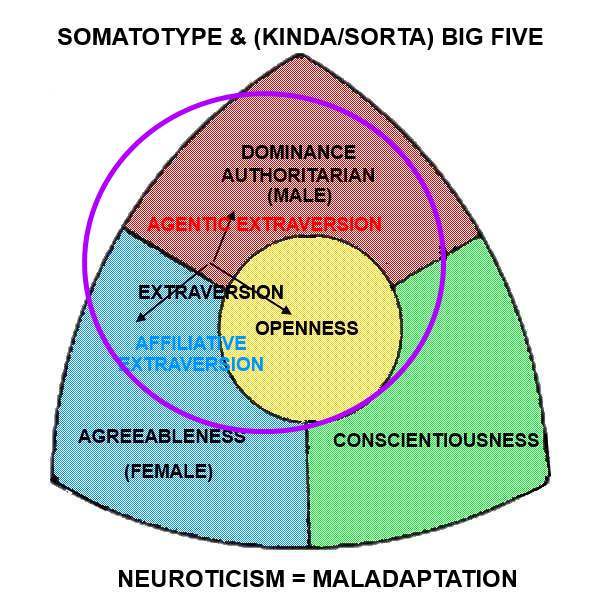Had enough of the four quadrant models? Let’s look at the Five Factor Model also known as the FFM . Some would like to think that the FFM is as close as we will ever get to a theory of personality. But is it really a theory that explains personality? Since it doesn’t explain the cause or causes of its BIG FIVE personality traits it really is a model – and NOT a theory. All these instruments rely on a subject’s cloudy perception of themselves making them very error prone.
The FFM is connected with the Big Five. The Big Five distinguishes itself from other models by using a methodology called the lexical (dictionary) approach. The core idea of this approach is that the most important ways of looking at personality are embedded in language. Personality descriptions use common words and in some cases might involve several words to express a trait. The goal is to find clusters of words and phrases that form a pattern of descriptive words.
The internet has plenty of information on the Big Five (FFM). The acronym OCEAN is a convenient way to remember the five factors. Here is a list of the five factors along with what they claim to measure.
O-Openness to experience – Creativity and General Intelligence
C- Conscientiousness – Dependable. Diligent.
E- Extraversion – Focused on popularity. Domineering. Energetic.
A- Agreeableness – Interested in peaceful and harmonious relationships.
N- Neuroticism – Anxiety, depression, anger.
Beyond the problems it shares with the other personality tests there are some that are uniquely troubling. The trait of dominance figures significantly into almost all human relationships. We all have had experiences with people who are bullies, bosses, dictators who intimidate and crave power and authority. This trait is represented in many typologies as shown in the list below.
- Hippocrates – Choleric
- Adler – Ruling
- Horney – Move against
- Dreikurs – Power
- Lewin – Autocratic
- Kefir – Superiority
- Borgatta – Assertive
But where is this trait in the Big Five. It’s there but it’s hiding in extraversion. The trait of extraversion has two dimensions. There is agentic extraversion which is energetic (mesomorphic – muscular). The other type of extraversion is called affiliative extraversion which is slightly more visceral (endomorphic) exhibiting a facilitative and helpful kind of dominance. Extraversion is a big factor mainly because it combines two other factors. It combines Openness which is focused on sensory activity that informs our view of what is EXternal and those EXternal things that require muscular activity to control, move or affect. In the FFM extraversion then is a description of the muscular/sensory system.
Another complication of the FFM is that neuroticism makes its appearance as a failure to adjust one’s personality to environmental demands. Neuroticism is an aggregation of maladjusted endomorphy (depression), maladjusted mesomorphy (paranoid anger) and maladjusted ectomorphy (anxiety). Neuroticism like extraversion, is a big factor because it pools aspects of the three big factors forming a class of maladjustment
My goal in reviewing the various personality models is to show how somatotype can explain personality. Without a dimension of control and dominance you lose the effect of mesomorphy. This makes it extremely difficult to map the FFM onto the somatotype chart.
So here is my map of the FFM onto the somatotype chart. As I promised it isn’t neat and pretty.
Because neuroticism is maladaptation it permeates all sectors of the somatotype triangle.


